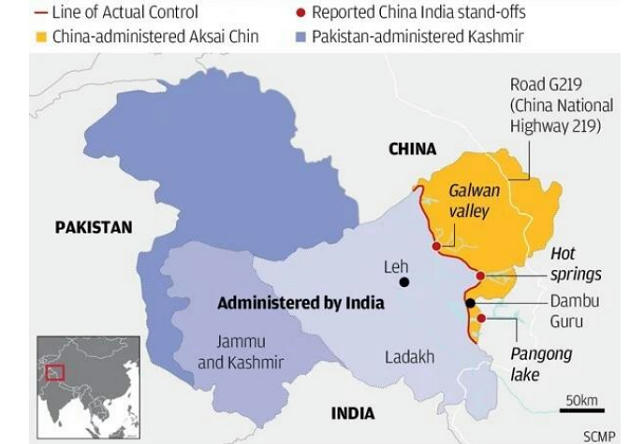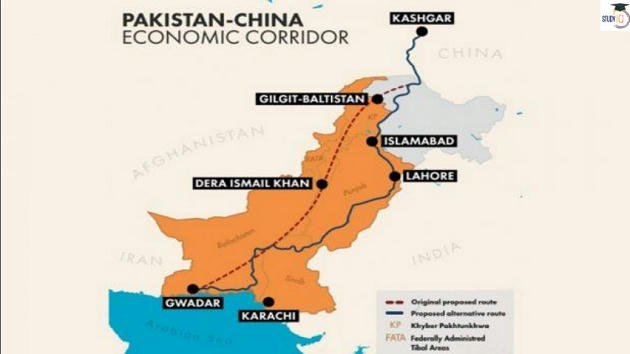Table of Contents
Wrong priorities
- When epidemiologists were recently polled in the U.S. on when they would think of attending religious service, 43% of about 200 respondents said they would consider that in three months to a year, and an equal number said not for one year.
- Physical distancing during mass religious gatherings is not possible.
- Even with online registration, e-passes, distance marking and use of personal protective equipment by staff, gatherings in confined spaces go against the grain of infection prevention principles.
- It is heartening that some temple boards, churches and Islamic religious bodies have wisely decided to remain closed.
- As among the top five virus-affected nations, India cannot afford to create conditions that lead to mass transmission.
- India needs to draw up its unlock priorities carefully.
- We have limited medical capacity.
- Getting unlocking wrong could mean an explosion of cases.
Crossing the line
- The decision announced by Chief Minister Arvind Kejriwal to restrict COVID-19 treatment in Delhi’s private hospitals and those run by the government of NCT only to those with proof of residence in the city was ill-thought-out.
- As Lieutenant-Governor Anil Baijal noted in his order overruling the decision, ‘Right to Health’ is an integral part of ‘Right to Life’ under Article 21 of the Constitution.
- While health care is far from being universal in India, positively denying that to someone on the grounds of residency is insensitive and irresponsible.
- The 10-week lockdown was meant to ramp up health infrastructure, and if the AAP government has not done that, it has only itself to blame.
- The NCT is functionally contiguous with Gurugram in Haryana and NOIDA in Uttar Pradesh.
- Thousands cross these borders for work and other needs including health care.
- This makes Mr. Kejriwal’s rhetoric unreasonable as much as Karnataka’s decision to prevent residents of Kasargod in Kerala from accessing hospitals in Mangaluru earlier.
- Delhi Govt has reduced testing dramatically — on June 2 it was 6,070, on June 7, 5,042, and on June 8, 3,700.
- The ICMR’s May 18 strategy directed testing of direct and high risk contacts of confirmed coronavirus individuals even if asymptomatic.
- The government revised this by removing “asymptomatic” from the clause, which was also overturned by the LG who ordered that guidelines must be adhered to in their entirety.
- Delhi is testing more than the national average for per million population but that does not say much given that it has a population density 30 times the national figure.
Flattening the climate curve
- Two interrelated curves began their upward trend two centuries ago with the advent of the industrial age.
- Atmospheric concentration of carbon dioxide (or, more generally, all greenhouse gases, GHGs)
- The average global temperature curve.
- Actually, the CO2 curve began its upward march about 18,000 years ago when it was a little under 200 parts per million (ppm) and earth was much colder.
- By the time it reached 270 ppm about 11,500 years ago, the warmer conditions accompanying this curve made it possible for the emergence of agriculture.
- Over the past million years, CO2 levels never exceeded 280-300 ppm.
- They always went back to 200 ppm before rising again in a cyclical fashion.
- They remained steady at close to 280 ppm for 10,000 years until, beginning in the mid-19th century, they began to rise again as humans burnt coal and oil to fuel the industrial revolution, and burnt forests to expand agriculture and settlements.
- From a mere 0.2 billion tonnes of CO2 emissions in 1850, annual emissions increased to 36 billion tonnes by 2018.
- Nature has been rather kind to us so far — about one-half of all CO2 emissions have been sanitised from the atmosphere, equally by growing vegetation on land and by absorption in the oceans.
- Nature’s kindness is not expected to last beyond a 2˚C rise in temperature as the carbon sequestered into vegetation will be thrown back into the atmosphere.
- Thus, the levels of CO2 in the atmosphere reached 407 ppm in 2018, a level last experienced by earth some three million years ago.
- From 1850 onwards, for over a century, the global temperature showed a slight warming trend.
- From 1975 onwards, the temperature graph has shown a distinct, upward trend.
- By 2015, the globe had heated by a full degree Celsius relative to a hundred years previously.
- Climate modellers unequivocally project that under the current trends of emissions the globe will heat up by 4˚C by the end of the century.
- Climate change involves not just a change in temperature but every other component of weather, including rainfall, humidity and wind speed.
- Indirect effects follow, such as a rise in sea levels from melting glaciers.
- Globally there have been several extreme weather events such as hurricanes, heat waves or droughts.
- While no single event can be directly attributed to climate change, the collective trends are consistent with climate change predictions.
- The 2003 European heat wave killed over 70,000 people.
- The years 2015-19 have globally been the warmest years on record.
- Leave aside the Amazon fire of 2019, the bush fires of 2019-20 in Australia were unprecedented in their scale and devastation.
- While our attention has been on COVID-19, news has just come in that March 2020 has been the second warmest March on record.
- Warning for India from University of Chicago: average summer temperatures would rise by 4˚C in most States.
- Extremely hot days (days above 35˚C), which were only five days in 2010, would increase to 15 days by 2050 and to 42 days by 2100 on average across all districts.
- A more moderate emissions scenario, as a result of countries largely fulfilling their commitments under the Paris Agreement, would keep average global temperature rise below 2˚C compared to pre-industrial levels.
- The most common excuse is that the world cannot afford to curb GHG emissions for fear of wrecking the economy.
- Wealthy nations are spending over $500 billion each year internally on projects aimed at reducing emissions.
- A sustained annual investment of $2.4 trillion in more efficient energy systems is needed until 2035 in order to keep warming below the more ambitious 1.5˚C relative to pre-industrial levels.
- Intergovernmental Panel on Climate Change: invest 2.5% of the global GDP.
- UN Climate Conference in 2009: richest nations had pledged to provide $100 billion in aid each year by 2020 to the poorer countries for climate change mitigation and adaptation.
- In 2017, for which data are available, only $71 billion had been provided, with most of the money going towards mitigation and less than 20% towards climate adaptation.
- Development funds or simply loans which had to be repaid
- It thus seems unlikely that the rich countries will deliver $100 billion in tangible climate finance during 2020.
- There is no substitute to reducing GHG emissions.
- Technologists, economists and social scientists should plan ahead.
Pincer provocations?
- Reality: Beijing and Islamabad are making coordinated efforts to challenge India’s presence in the Kashmir-Ladakh region.
- There is stepped-up activity on Pakistan’s part to infiltrate terrorists into the Valley.
- China has undertaken provocative measures on the Ladakh front to assert control over disputed areas around the Line of Actual Control (LAC).


- Increasing road-building activity on India’s part close to the LAC.
- India should, therefore, distinguish the different objectives on the part of Beijing and Islamabad and tailor its responses accordingly without conflating the two threats to its security.
The anatomy of anti-black racism
- Despite the civil war over slavery, and the civil rights movement for dignity and equality, systemic discrimination and violence against blacks persists.
- Racism continues unabated.
- Racism in a nutshell: one can tell everything important about a person, his group, its past and future, by noting the colour of his skin.
- Noticing the physical characteristics of a person, say the colour of her skin, is not itself racist.
- Being conscious of the colour of a person, your own or that of the other may be pretty innocent.
- However, when specific bodily features (colour, shape of nose, eye, lips) are permanently clumped together and human beings are classified in terms of these distinct biological clusters, and if, further, it is believed that these shared features are inter-generationally transmitted, then we possess the idea of race, i.e. a group with a common biological descent.
- Every single human being is not only seen then to be assigned to separate biologically-determined groups but also as born with traits directly inherited from biological ancestors.
- Each race is then believed to be fundamentally, permanently different from others — differences that are innate and indelible, for one can neither cease to have what one has inherited nor acquire characteristics which one does not already have.
- If anything, the only conclusion from available evidence is that the whole of humanity has the same lineage, that there are no races within humans but only one single human ‘race’.
- Yet, while scientifically speaking, race is a fiction, a large number of people believe in the existence of races. Race is very much a cultural and social reality.
- Racism, then, is a systematic ideology, a complex set of beliefs and practices that, on the presumed basis of biology, divides humanity into the ‘higher’ us and a lower ‘them’.
- Racism naturalises a person’s belief, character and culture.
- For example, being uneducated is seen not as socio-economic deprivation but a sign of inherited low IQ.
- True, good education helps in dismantling racism but the fact remains that much of it lies hidden within the social structure, in habits, practices and institutions.
- Only a peaceful movement to end institutionalised racism, with both blacks and white participants, quite like the recent protests after Floyd’s murder, can break the back of this evil.
- But can such a movement be sustained? Will it be allowed to?
Download Free PDF – Daily Hindu Editorial Analysis






















 WhatsApp
WhatsApp